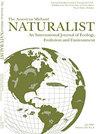劳伦斯阔叶林小型哺乳动物种群和群落对单株选择收获的响应
IF 0.6
4区 环境科学与生态学
Q4 Agricultural and Biological Sciences
引用次数: 0
摘要
摘要小型哺乳动物是脊椎动物群落中无处不在的成员,对栖息地变化很敏感。在北美五大湖地区,小型哺乳动物群落变化迅速,但缺乏对潜在机制的实验测试。使用前后对照处理设计,我们量化了美国威斯康星州劳伦斯硬木林中小型哺乳动物对单株选择收获的反应。我们记录了造林处理后森林结构和小型哺乳动物丰度、物种多样性和群落相似性的变化。处理降低了树木密度和树冠覆盖率,增加了平均树木直径、木质茎密度、木质茎强度变化和粗木质碎屑的体积。Peromyscus和北方短尾鼩(Blarina brevicoda)是不同处理和年份的主要群落成员。白足鼠(P.leucopus)在治疗前的数量超过了林地鹿鼠(P.maniculatus gracilis),但在治疗后下降了近50%;鹿鼠和总啮齿动物(即啮齿动物)的丰度没有变化。小型哺乳动物物种多样性在治疗后增加了两倍。我们的实验确定了Peromyscus对木材采伐的物种特异性反应:白足鼠是数量优势和多面手物种,对栖息地变化最敏感,它们的反应对小型哺乳动物群落结构产生级联效应。未来的实验应该在多年的框架内评估这些小型哺乳动物的反应,并量化它们对更广泛脊椎动物群落的影响。本文章由计算机程序翻译,如有差异,请以英文原文为准。
Population and Community Responses of Small Mammals to Single-tree Selection Harvest in Laurentian Hardwood Forests
Abstract. Small mammals are ubiquitous members of vertebrate communities that are sensitive to habitat change. In the Great Lakes region of North America, small mammal communities have changed rapidly, but experimental tests of potential mechanisms are lacking. Using a before-after, control-treatment design, we quantified the response of small mammals to single-tree selection harvest in Laurentian hardwood forests of Wisconsin, United States. We documented changes in forest structure and small mammal abundance, species diversity, and community similarity from silvicultural treatment. Treatment reduced tree density and canopy cover and increased mean tree diameter, woody stem density, variation in woody stem density, and volume of coarse woody debris. Peromyscus and northern short-tailed shrews (Blarina brevicauda) were dominant community members across treatments and years. White-footed mice (P. leucopus) outnumbered woodland deer mice (P. maniculatus gracilis) before treatment, but declined by almost fifty percent after treatment; deer mice and total rodent (i.e., Rodentia) abundances were unchanged. Small mammal species diversity increased twofold following treatment. Our experiment identified species-specific responses within Peromyscus to timber harvest: white-footed mice, the numerically dominant and generalist species, were most sensitive to habitat change, and their response produced cascading effects to small mammal community structure. Future experiments should assess these small mammal responses in a multi-year framework and quantify their effects on the broader vertebrate community.
求助全文
通过发布文献求助,成功后即可免费获取论文全文。
去求助
来源期刊

American Midland Naturalist
环境科学-生态学
CiteScore
1.20
自引率
0.00%
发文量
38
审稿时长
18-36 weeks
期刊介绍:
The American Midland Naturalist has been published for 90 years by the University of Notre Dame. The connotations of Midland and Naturalist have broadened and its geographic coverage now includes North America with occasional articles from other continents. The old image of naturalist has changed and the journal publishes what Charles Elton aptly termed "scientific natural history" including field and experimental biology. Its significance and breadth of coverage are evident in that the American Midland Naturalist is among the most frequently cited journals in publications on ecology, mammalogy, herpetology, ornithology, ichthyology, parasitology, aquatic and invertebrate biology and other biological disciplines.
 求助内容:
求助内容: 应助结果提醒方式:
应助结果提醒方式:


